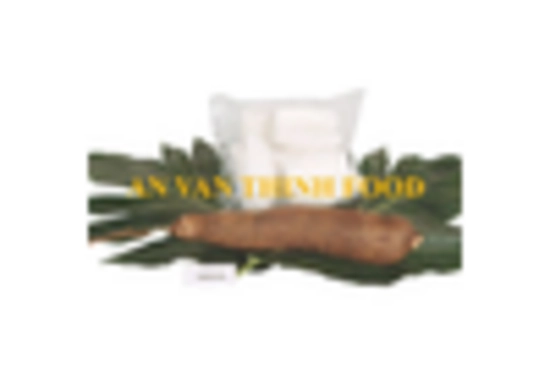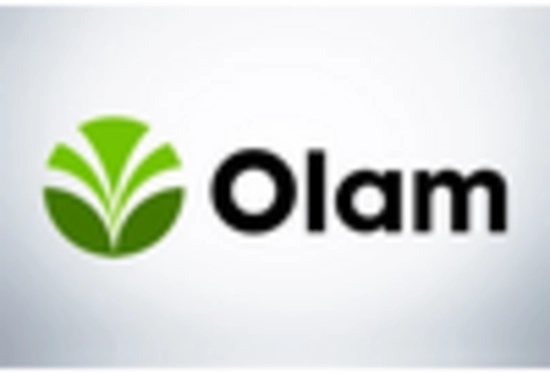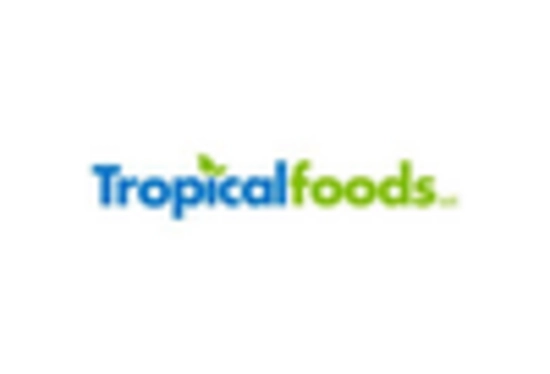Rising Popularity of Plant-Based Diets
The surge in plant-based diets is influencing the Cassava Flour Market significantly. As more consumers adopt vegetarian and vegan lifestyles, the demand for plant-based ingredients has escalated. Cassava flour, derived from the cassava root, aligns well with these dietary preferences, offering a versatile ingredient for various recipes. Market data indicates that the plant-based food sector is projected to reach substantial growth, with many consumers seeking alternatives to traditional wheat flour. This trend not only supports the cassava flour market but also encourages innovation in product development, as manufacturers explore new ways to incorporate cassava flour into everyday foods. Consequently, the Cassava Flour Market is poised to thrive amidst this growing inclination towards plant-based eating.
Technological Advancements in Processing
Technological advancements in food processing are reshaping the Cassava Flour Market. Innovations in milling and processing techniques have enhanced the quality and shelf life of cassava flour, making it more appealing to manufacturers and consumers alike. Improved processing methods can lead to better texture and flavor profiles, which may increase the acceptance of cassava flour in various culinary applications. Furthermore, the integration of technology in supply chain management has streamlined production processes, potentially reducing costs and increasing efficiency. As a result, the Cassava Flour Market is likely to experience growth driven by these technological improvements, which may facilitate wider distribution and accessibility of cassava flour products.
Expansion of E-commerce and Online Retail
The expansion of e-commerce and online retail platforms is transforming the Cassava Flour Market. With the rise of digital shopping, consumers now have easier access to a variety of cassava flour products, which may enhance market growth. Online platforms allow for a broader reach, enabling manufacturers to connect with consumers who may not have access to specialty stores. Market data suggests that online grocery sales have surged, indicating a shift in consumer purchasing behavior. This trend is likely to continue, as convenience and accessibility become paramount for consumers. As a result, the Cassava Flour Market is expected to benefit from the increasing prominence of e-commerce, facilitating greater distribution and sales opportunities.
Health Consciousness and Nutritional Benefits
The increasing awareness of health and nutrition among consumers appears to be a driving force in the Cassava Flour Market. Cassava flour is recognized for its gluten-free properties, making it a preferred choice for individuals with gluten sensitivities or celiac disease. Additionally, it is rich in carbohydrates and provides essential nutrients, which may appeal to health-conscious consumers. The market for gluten-free products has been expanding, with estimates suggesting a compound annual growth rate of over 9% in recent years. This trend indicates a growing preference for alternative flours, including cassava, as consumers seek healthier dietary options. As a result, the Cassava Flour Market is likely to benefit from this shift towards nutritious and gluten-free alternatives.
Increased Awareness of Sustainable Agriculture
The growing emphasis on sustainable agriculture practices is impacting the Cassava Flour Market positively. Consumers are becoming more conscious of the environmental implications of their food choices, leading to a preference for sustainably sourced ingredients. Cassava, being a drought-resistant crop, requires less water compared to other staple crops, which may appeal to environmentally aware consumers. This shift towards sustainability is reflected in market trends, as more brands are highlighting their commitment to ethical sourcing and environmentally friendly practices. Consequently, the Cassava Flour Market stands to gain from this heightened awareness, as consumers increasingly seek products that align with their values regarding sustainability.


















Leave a Comment